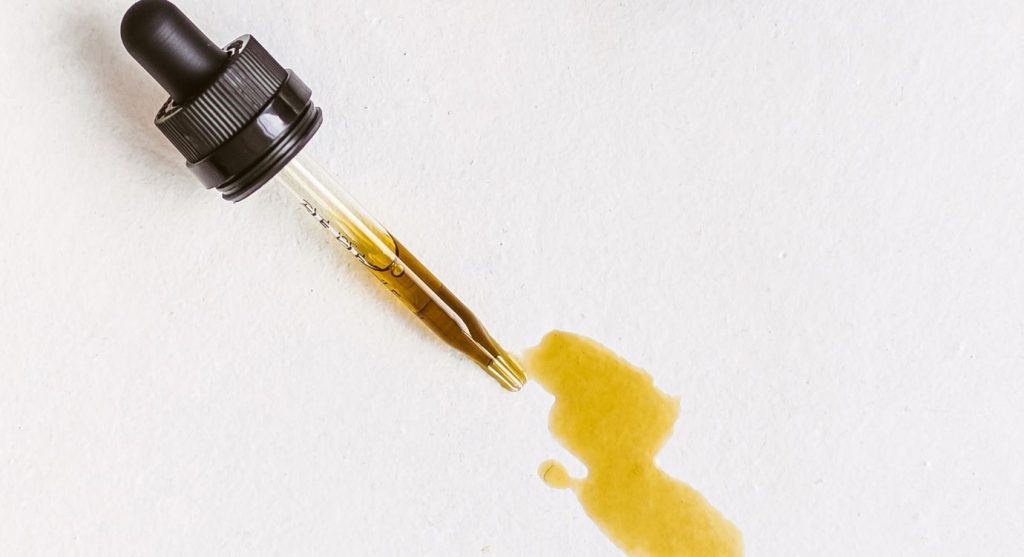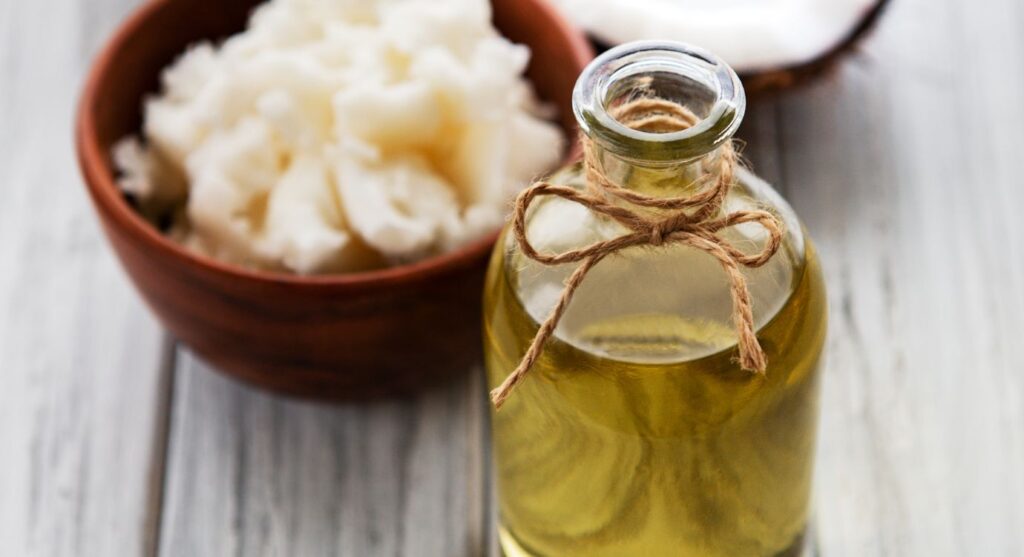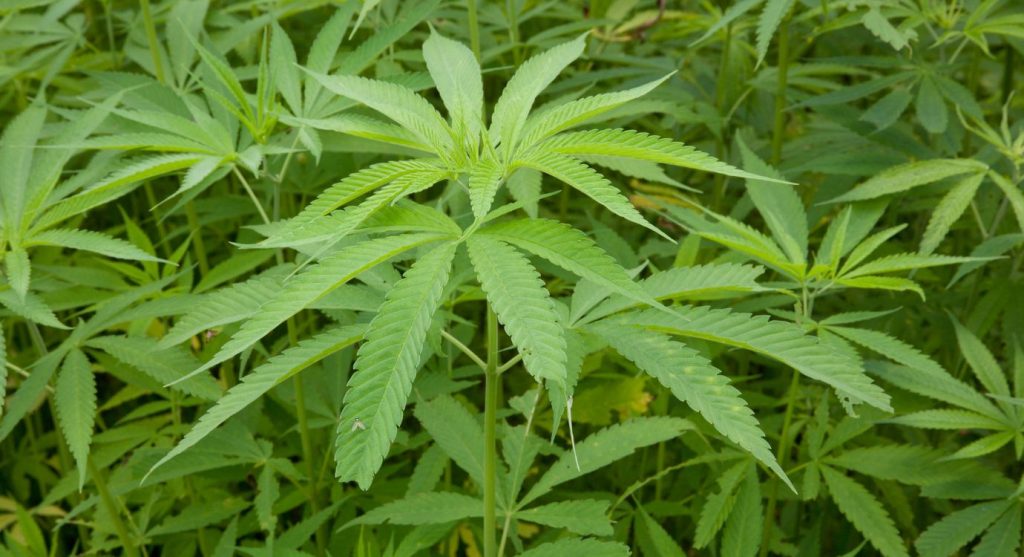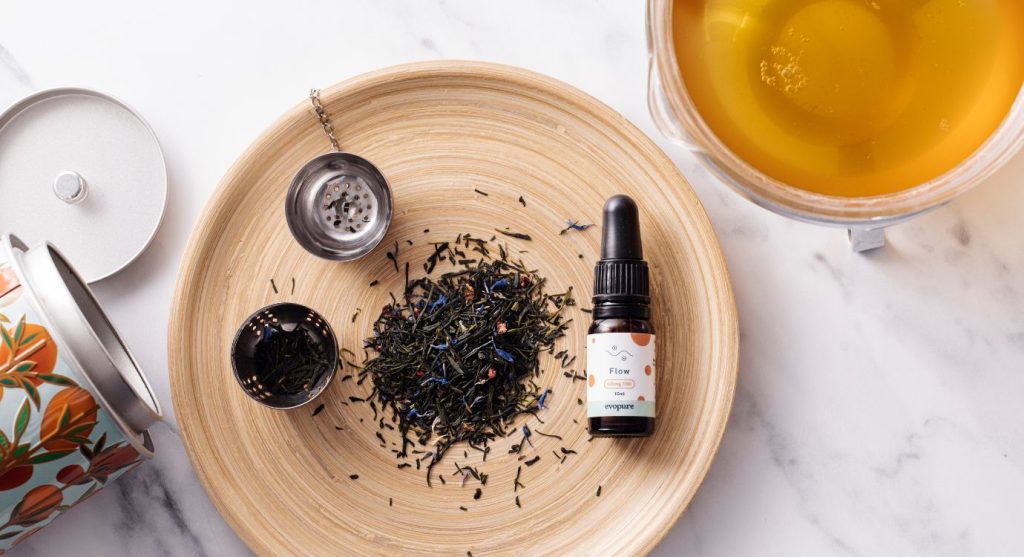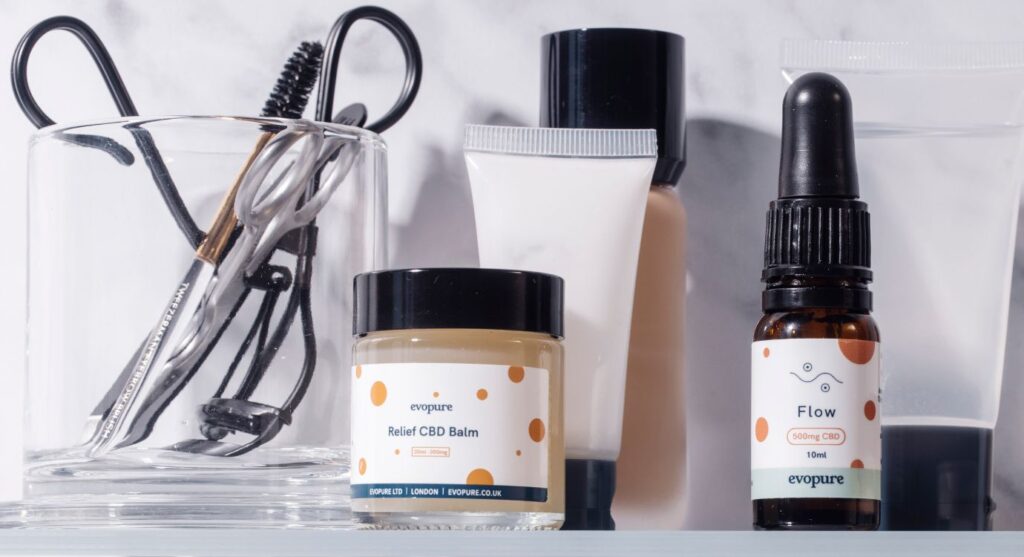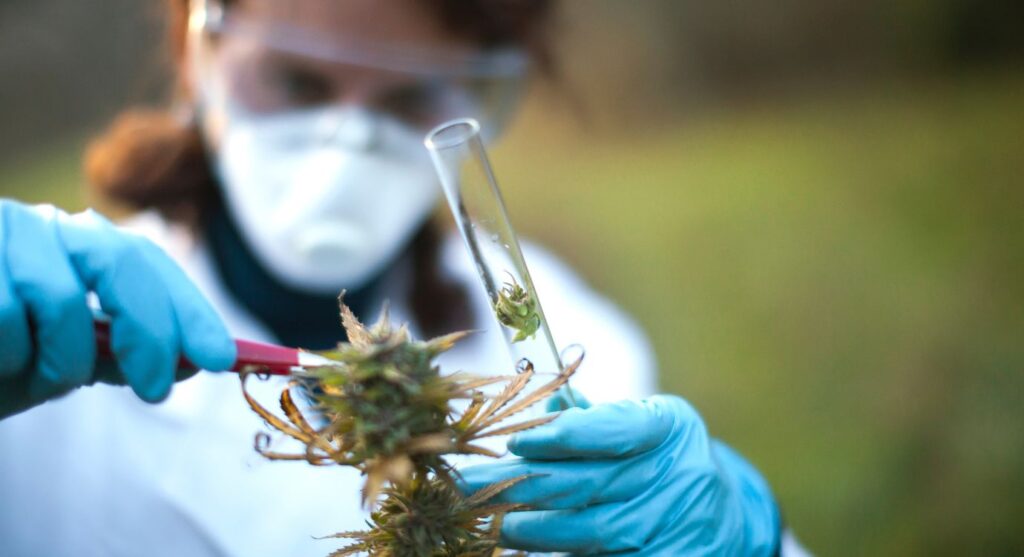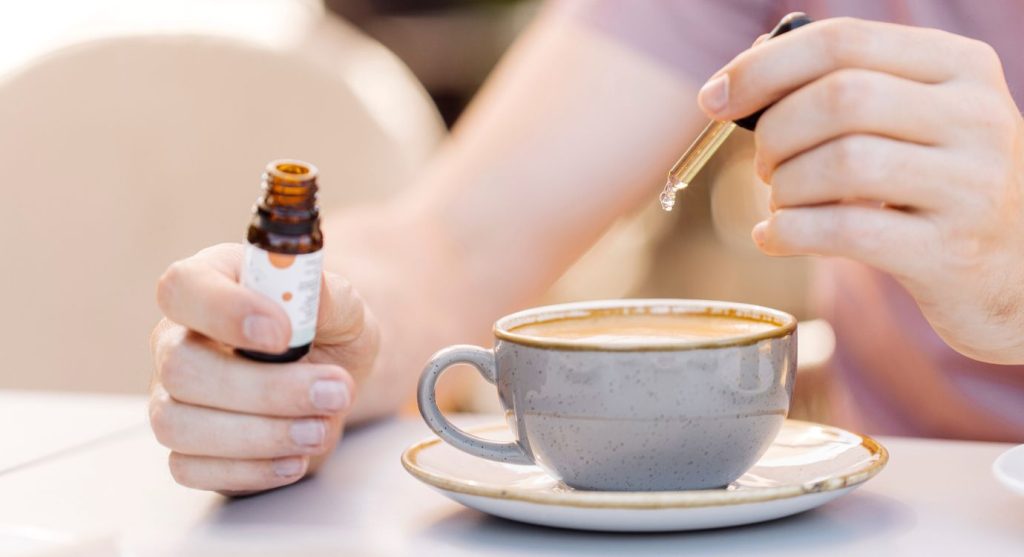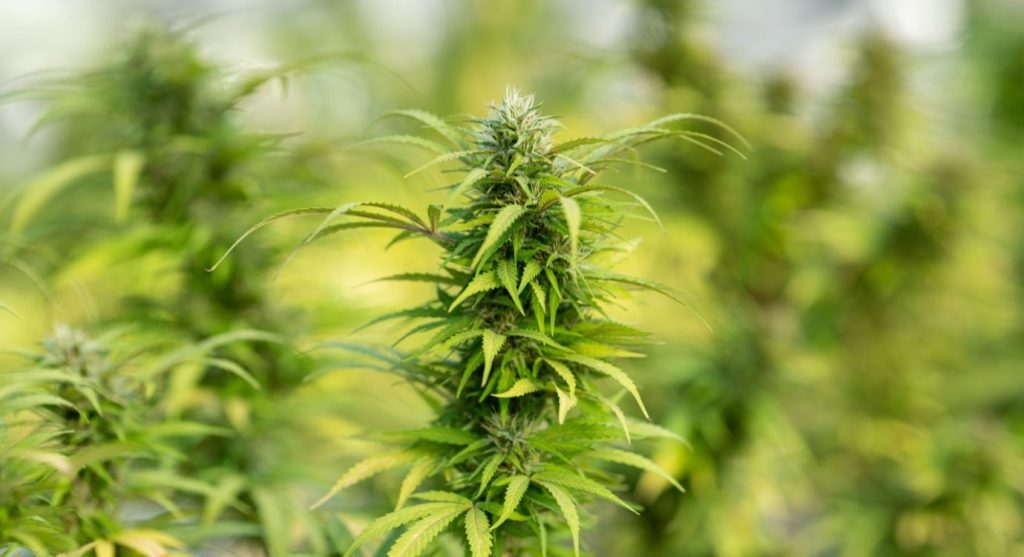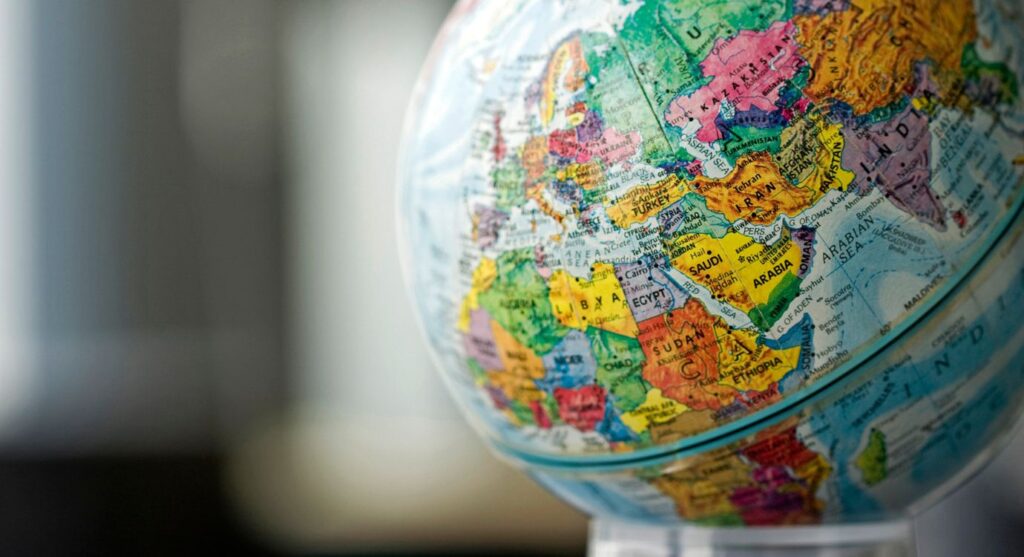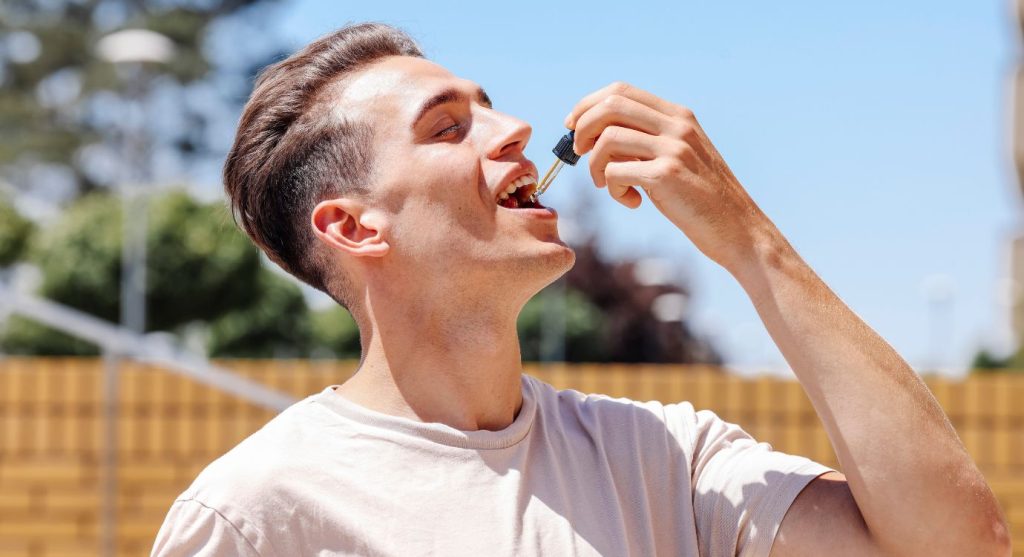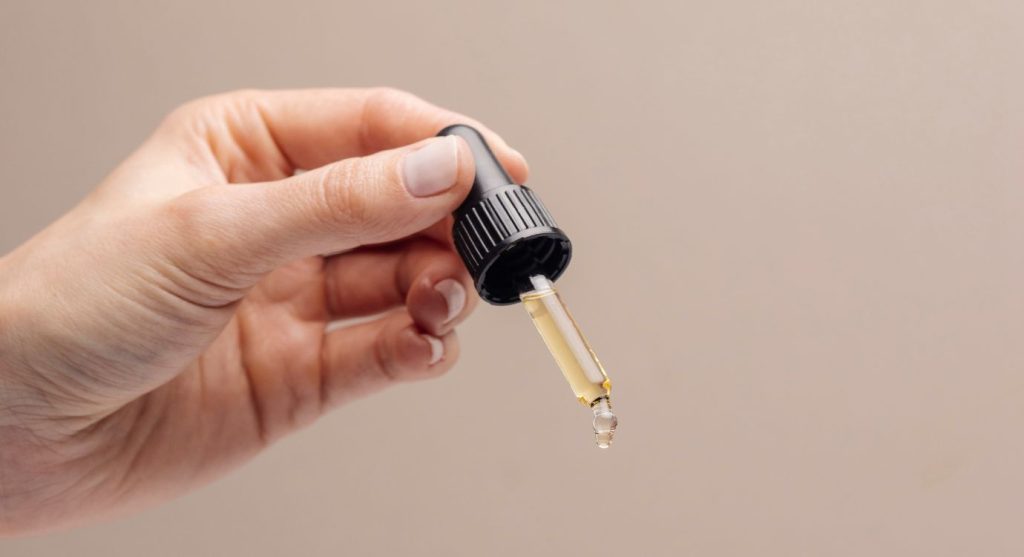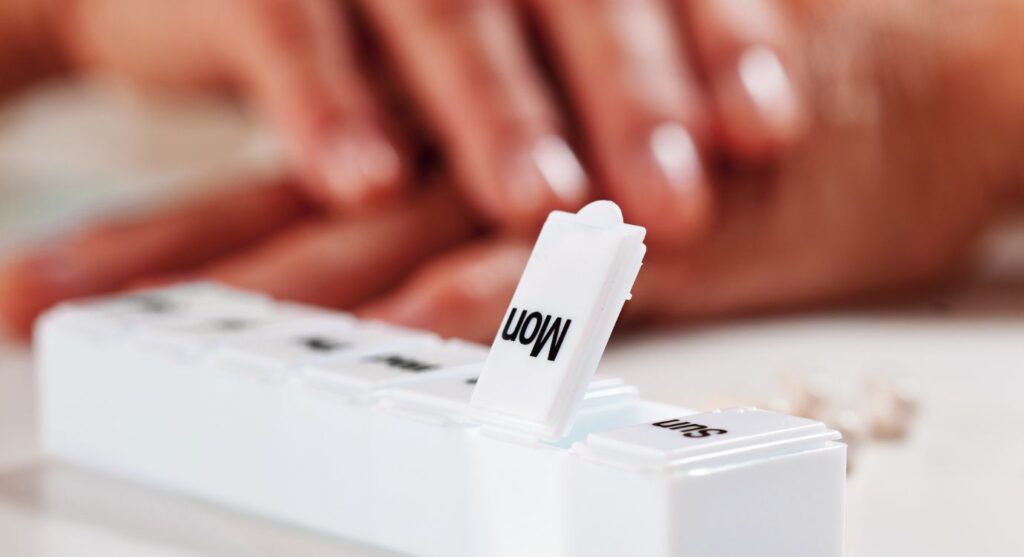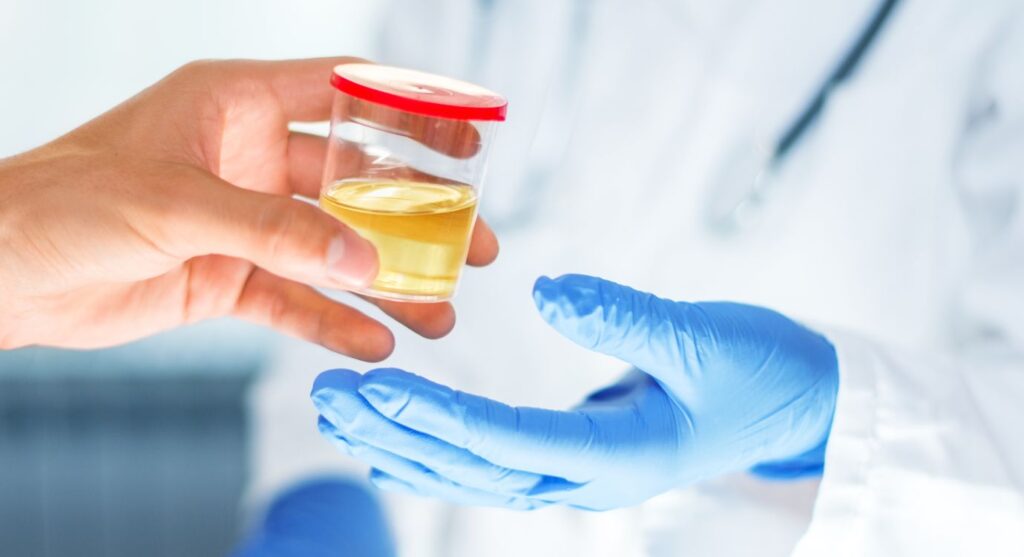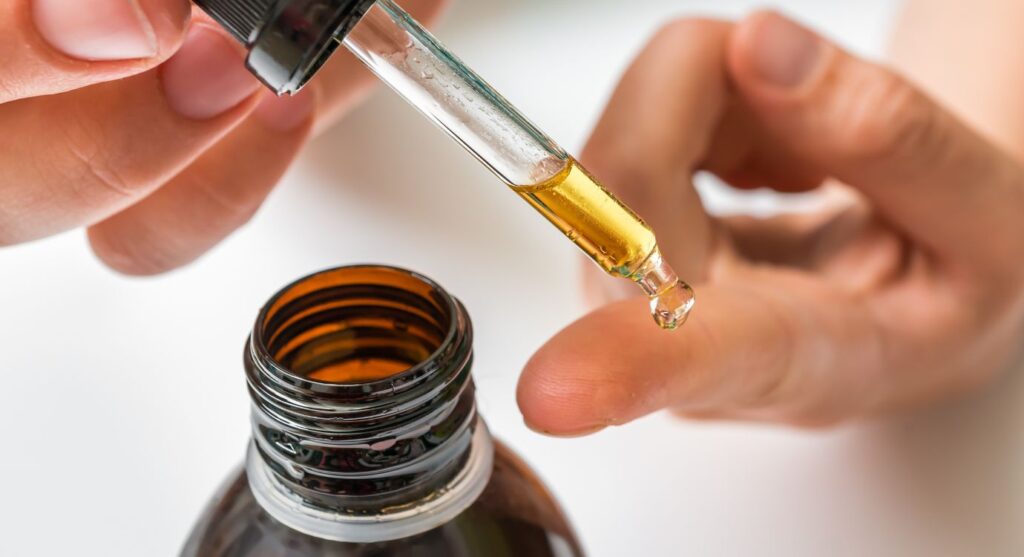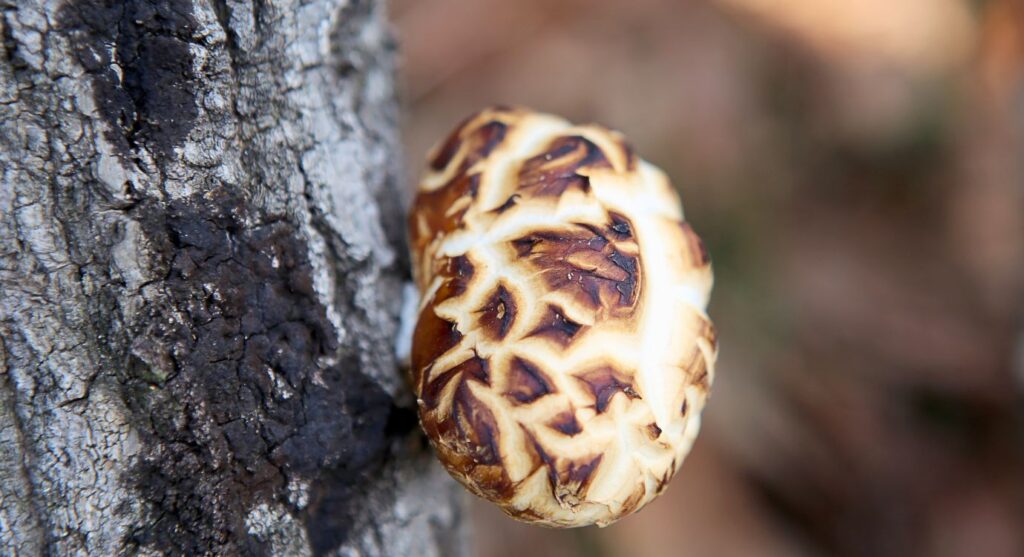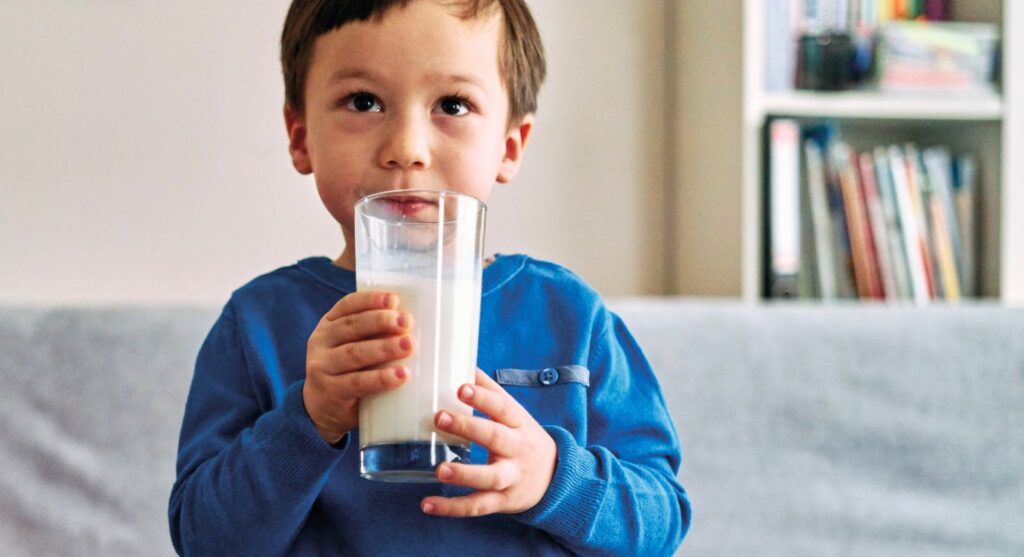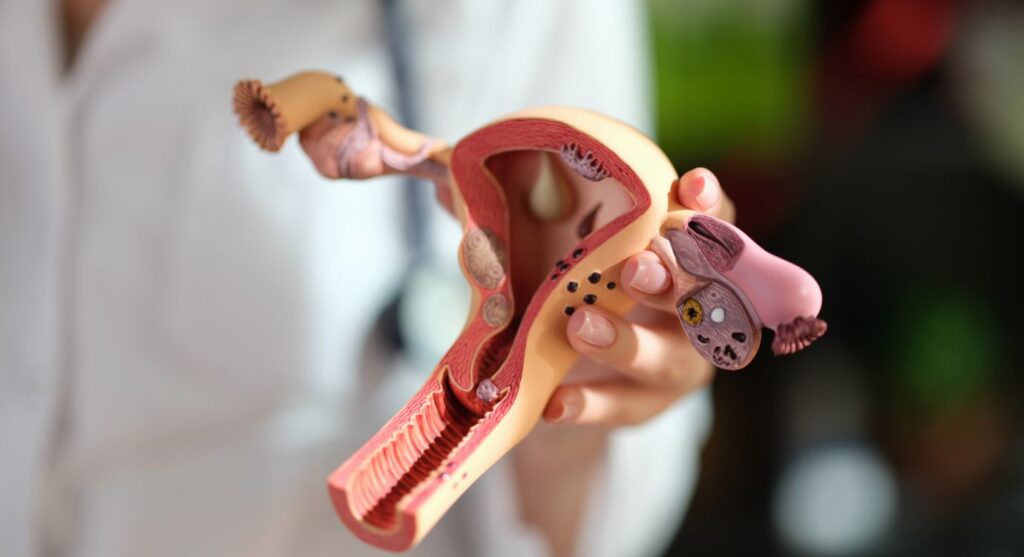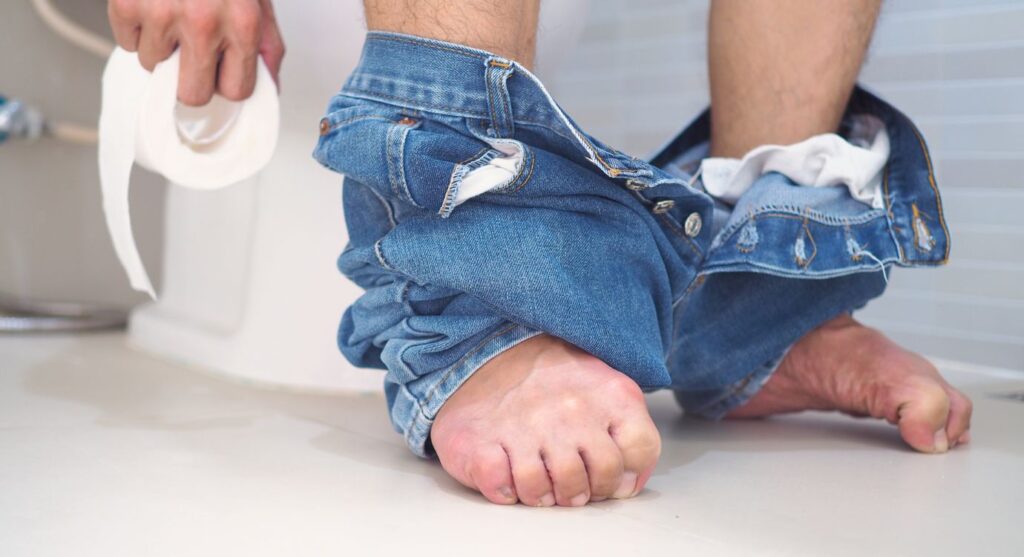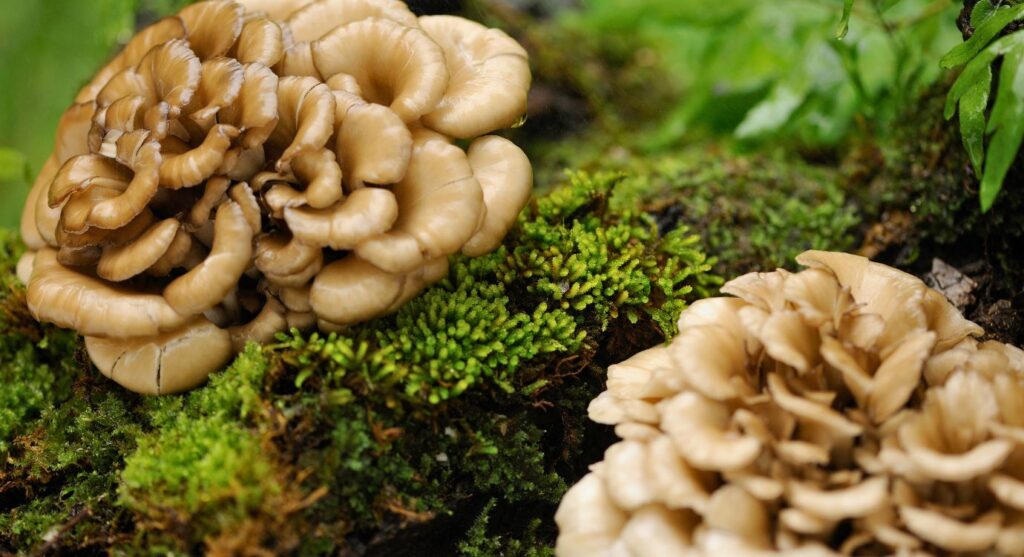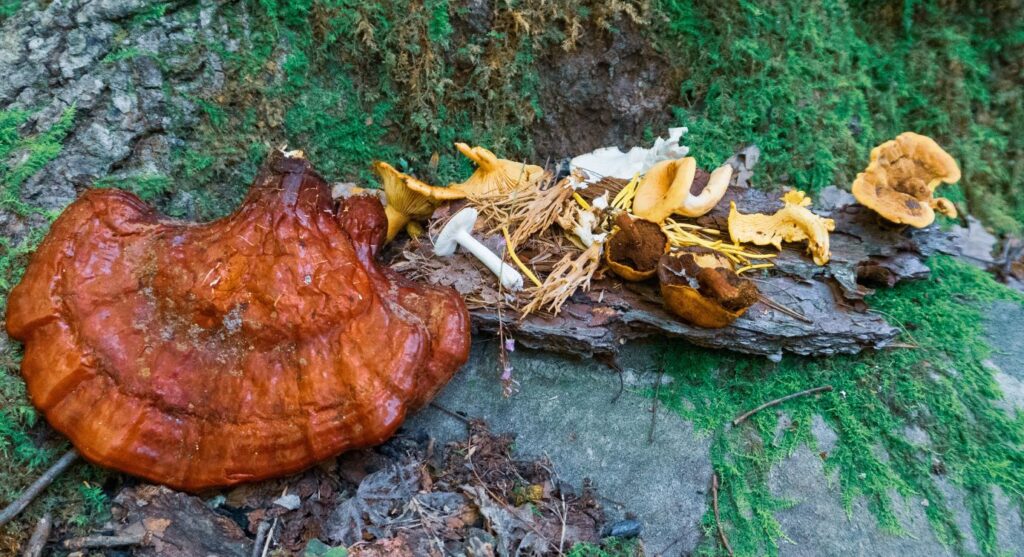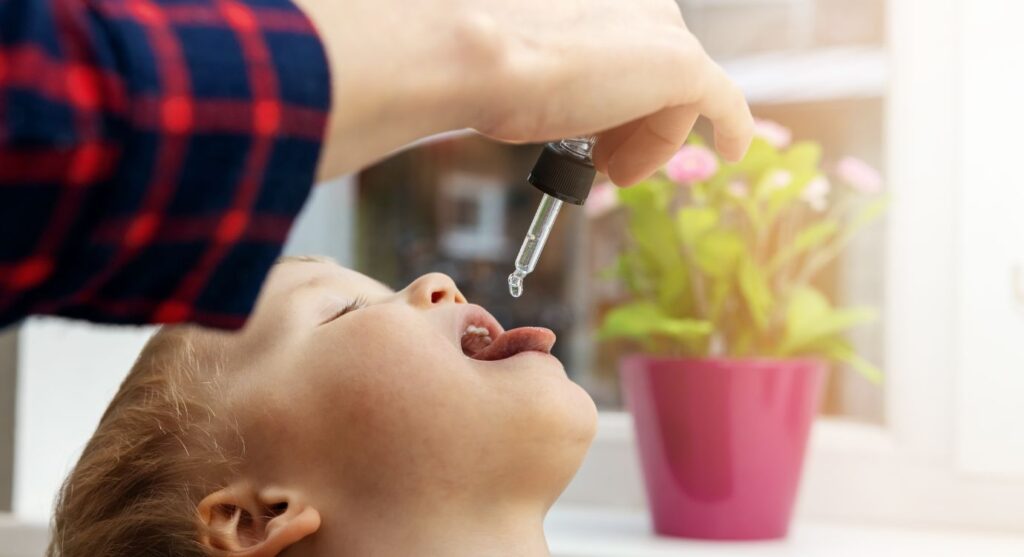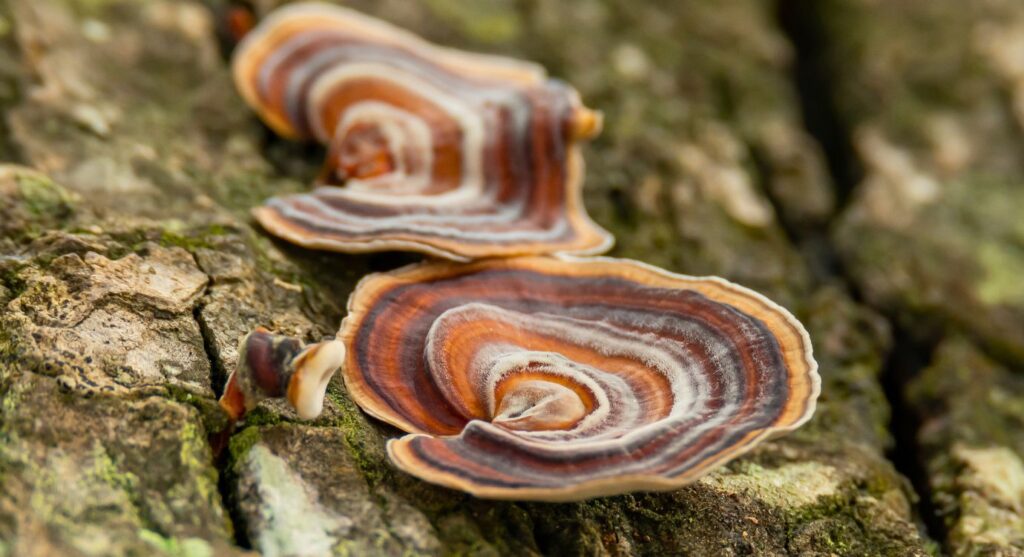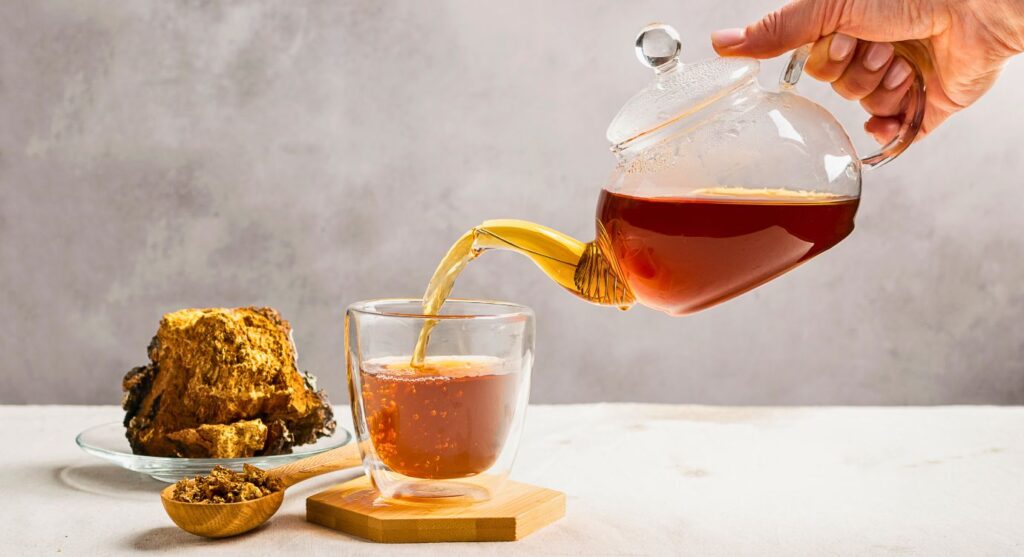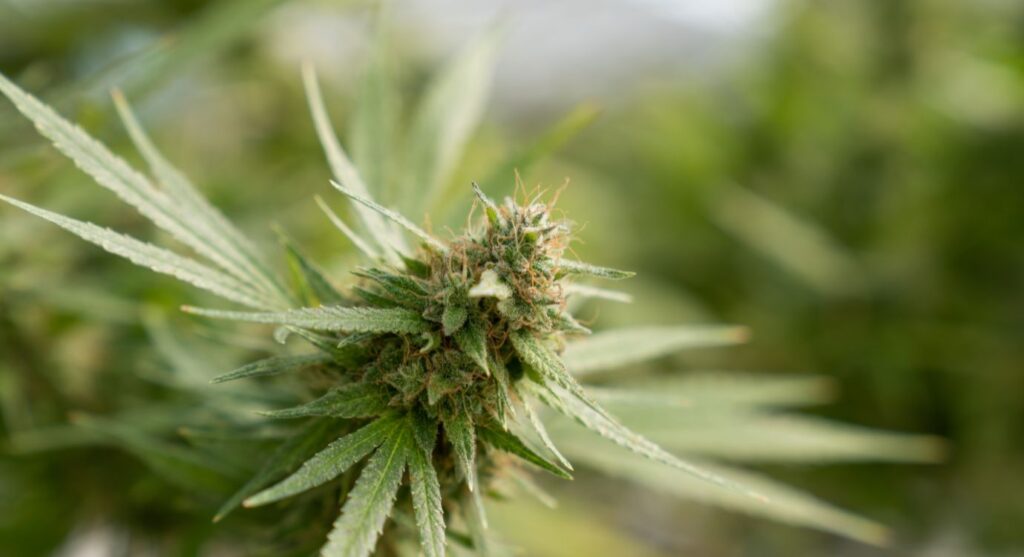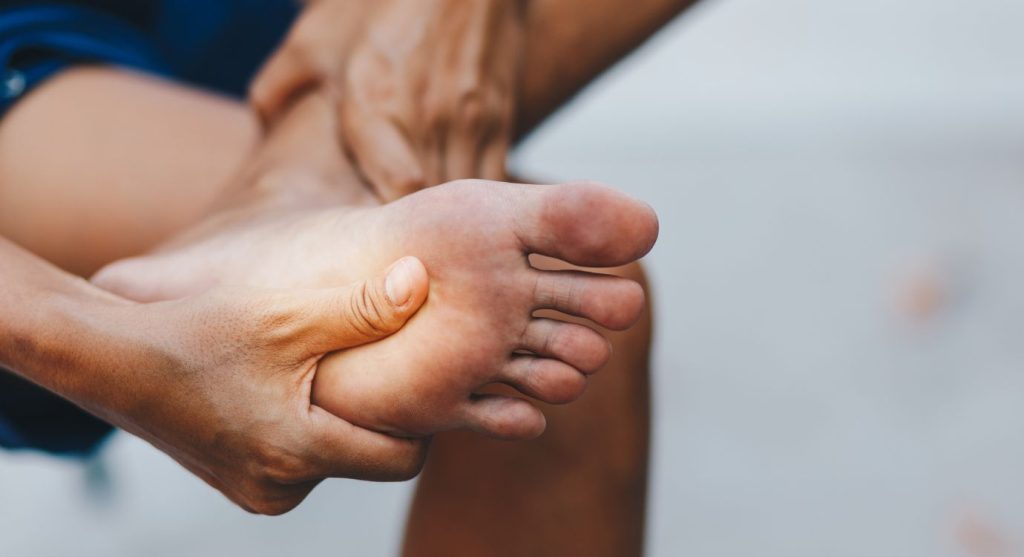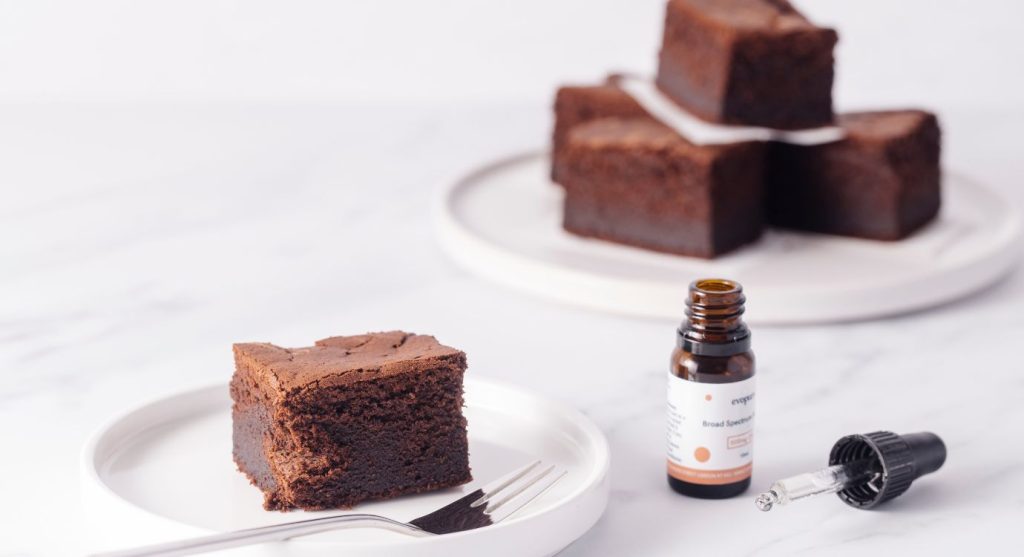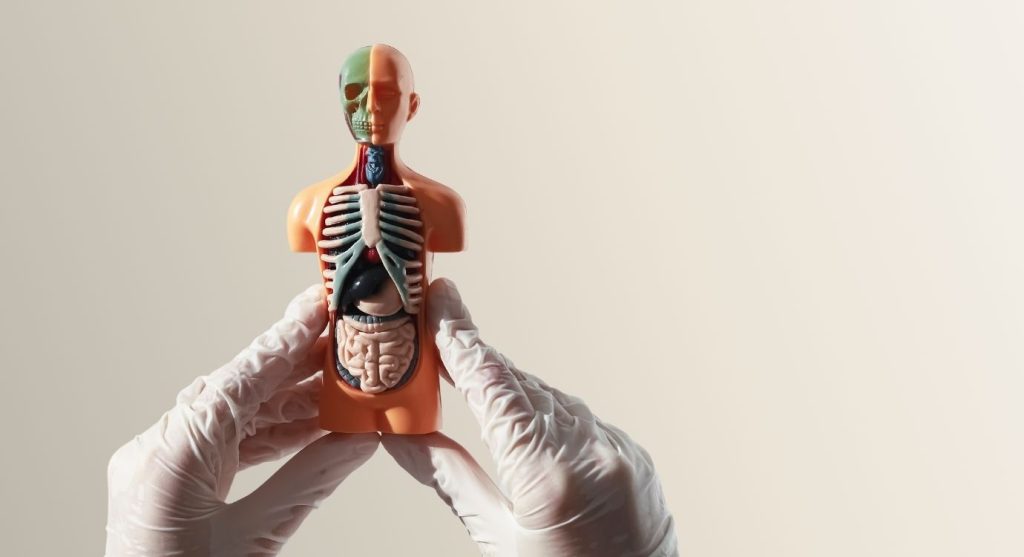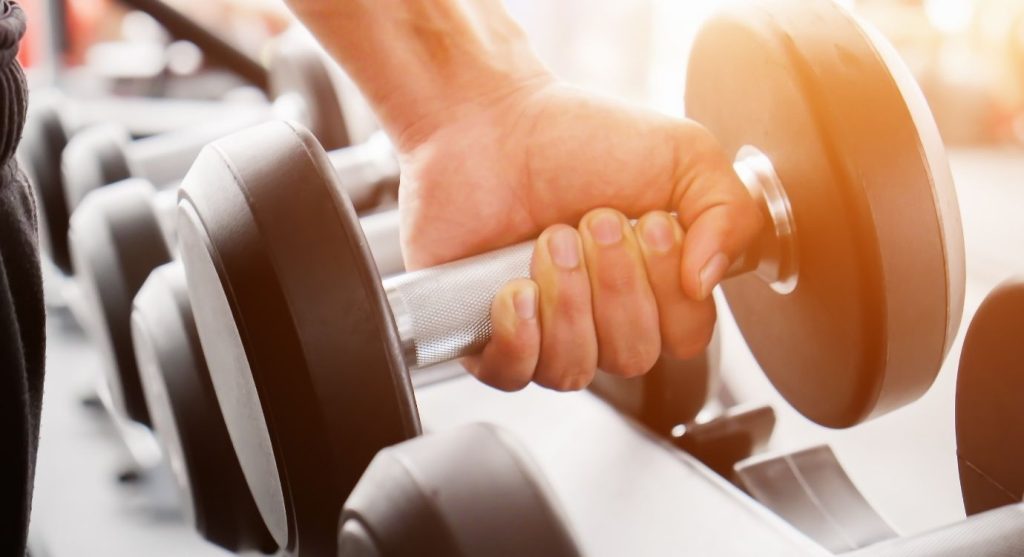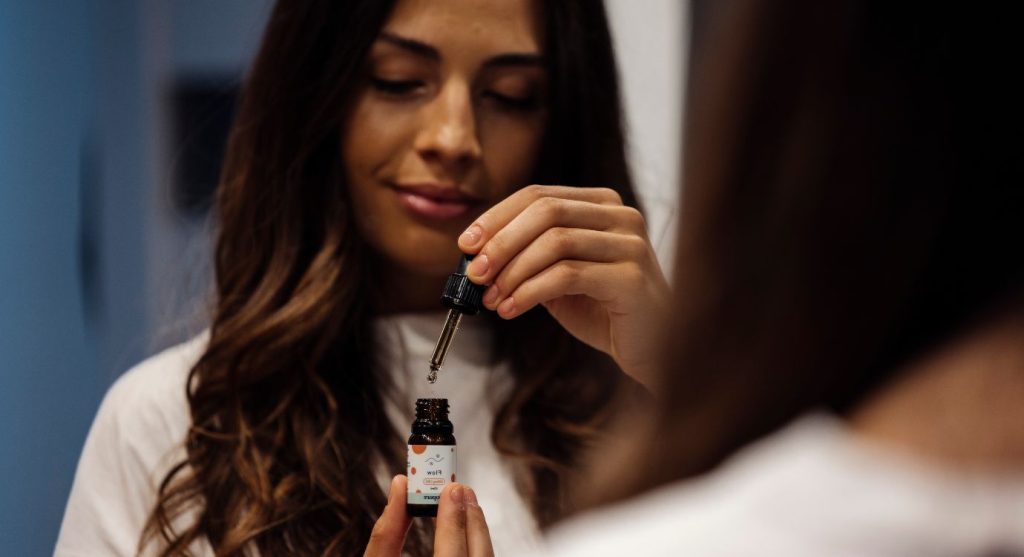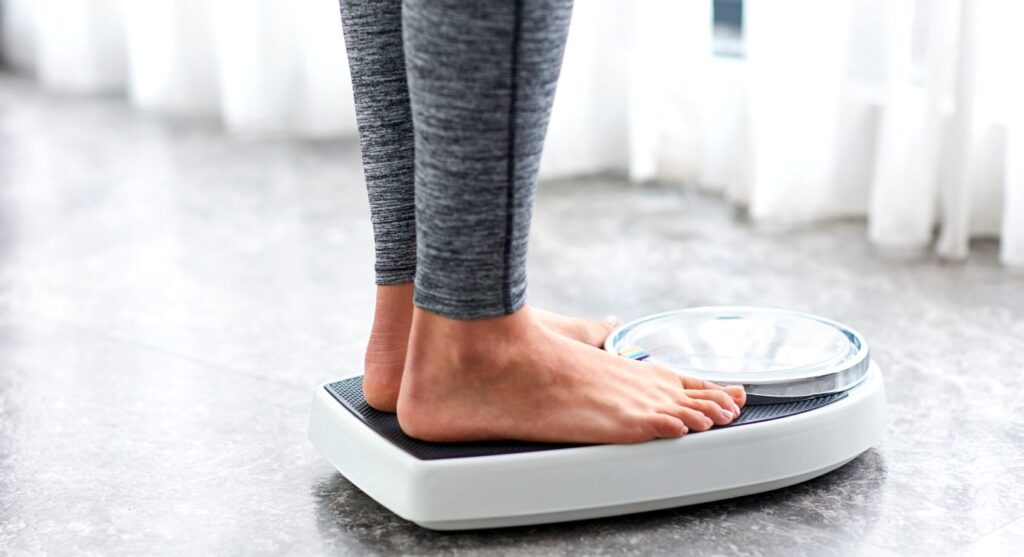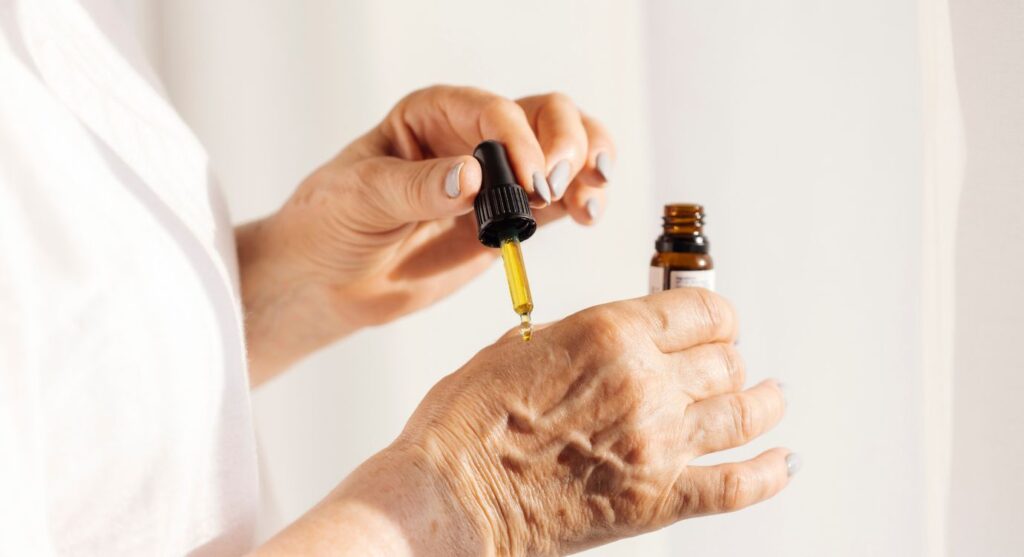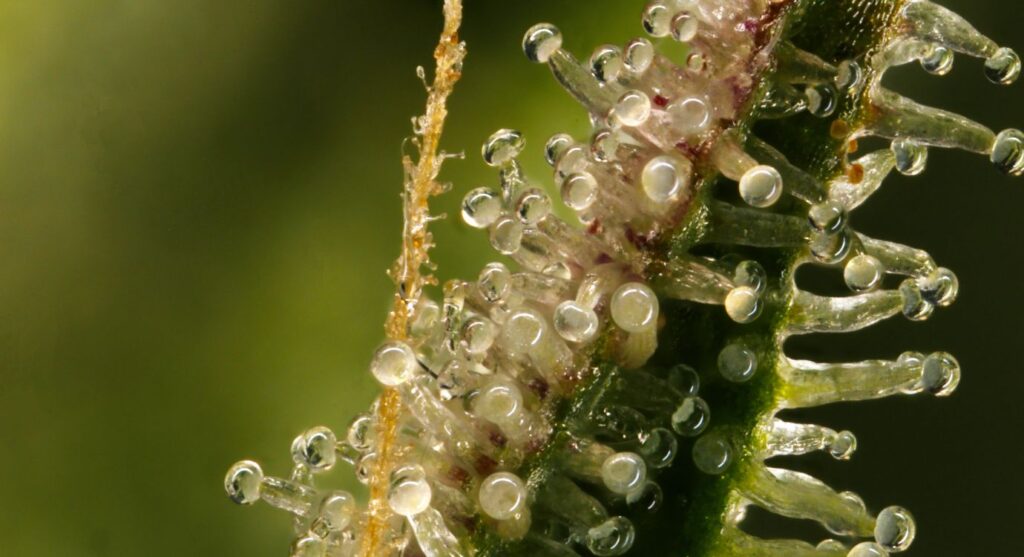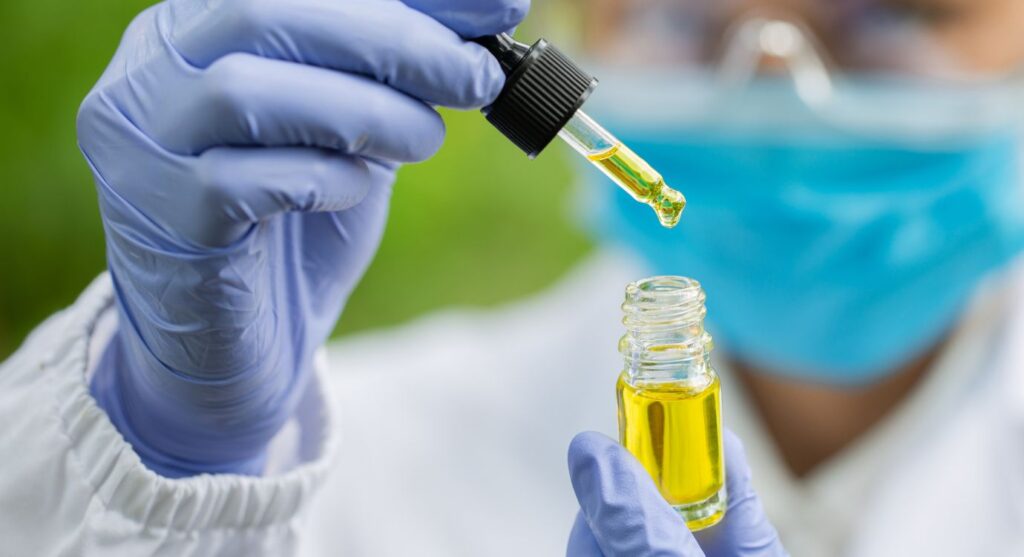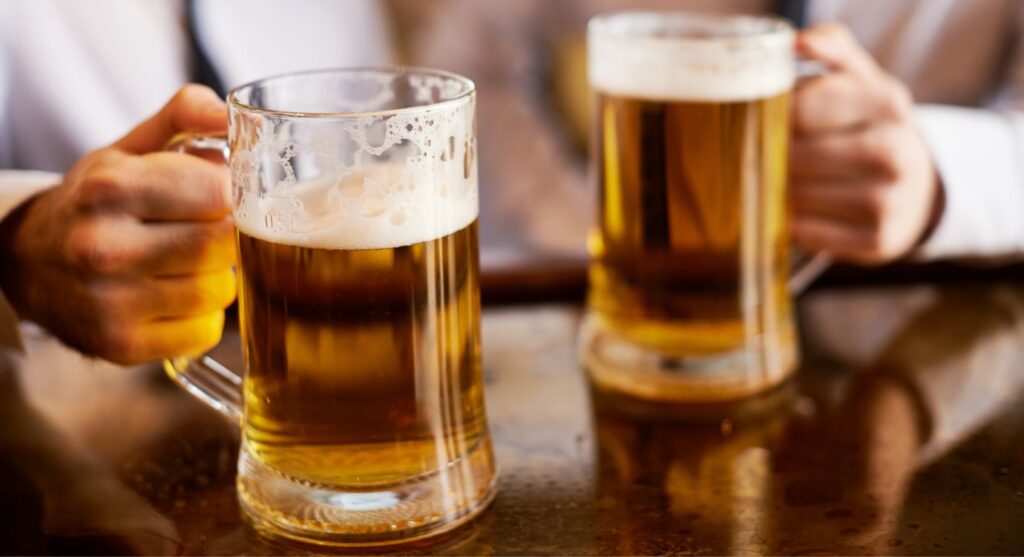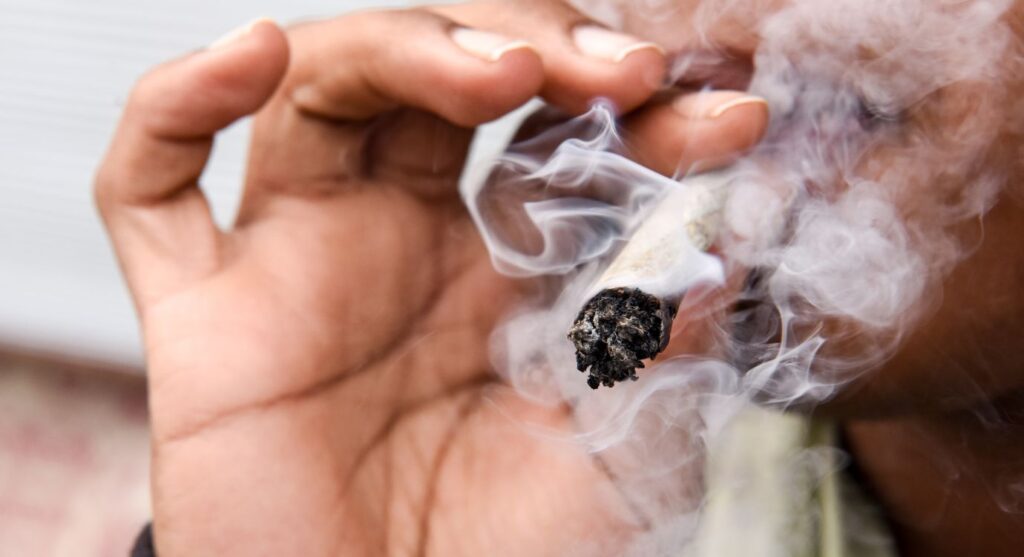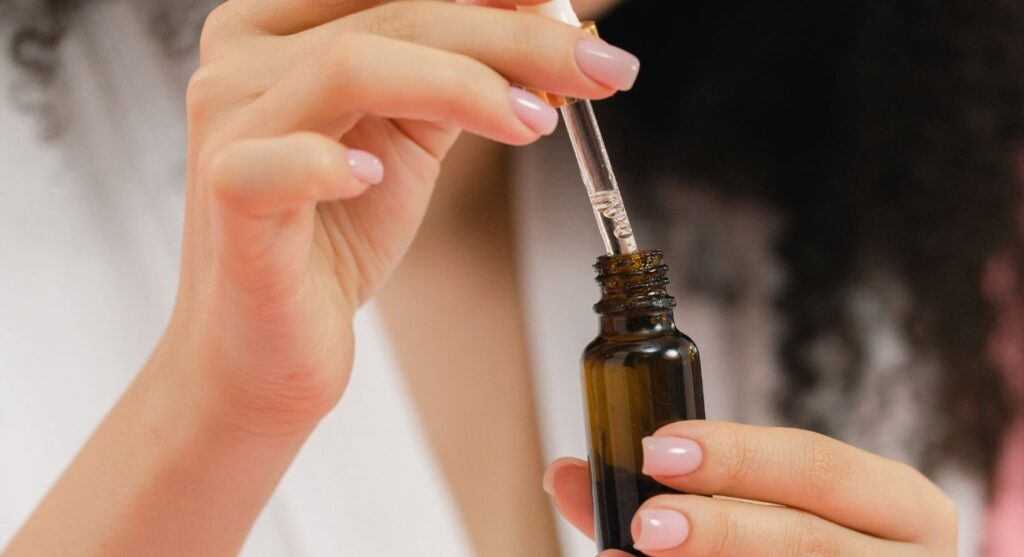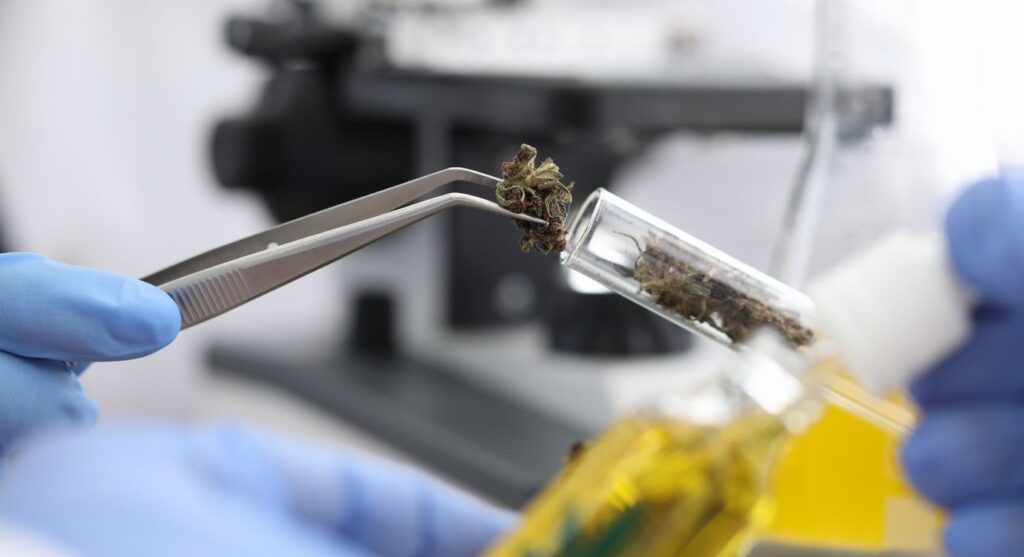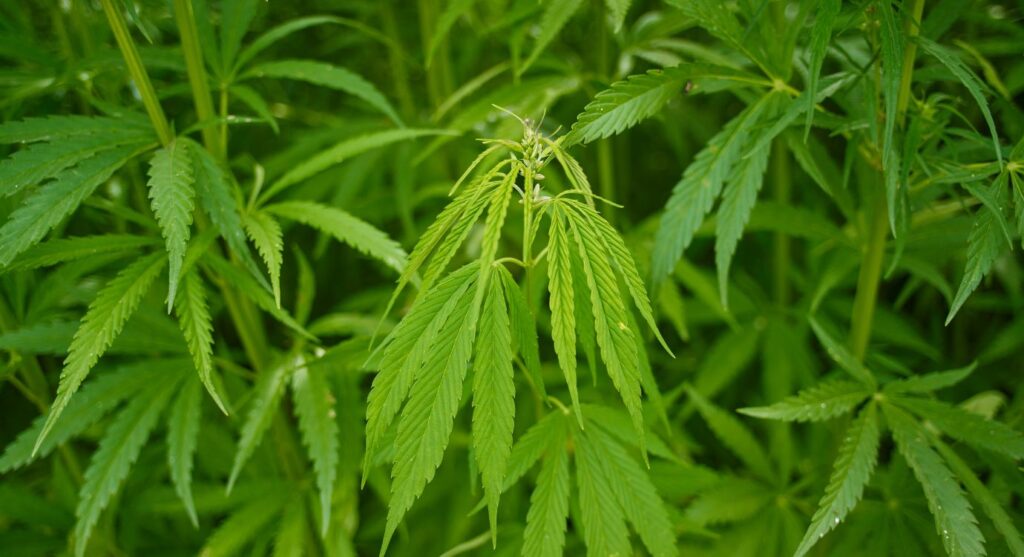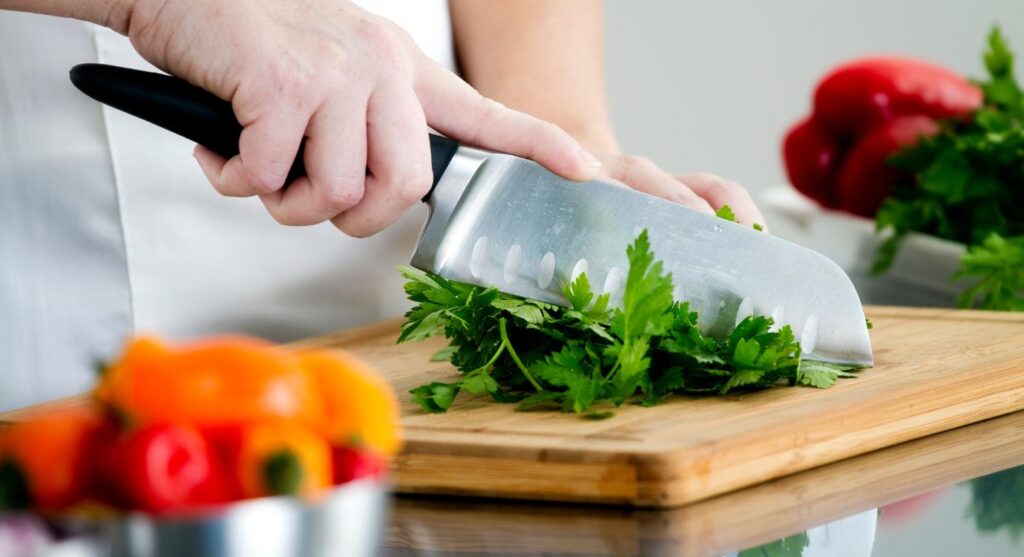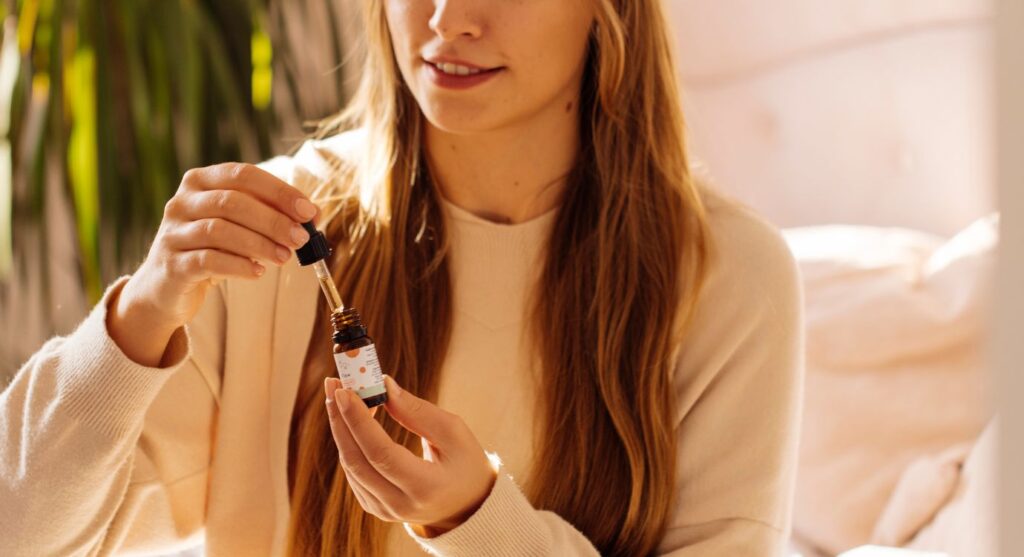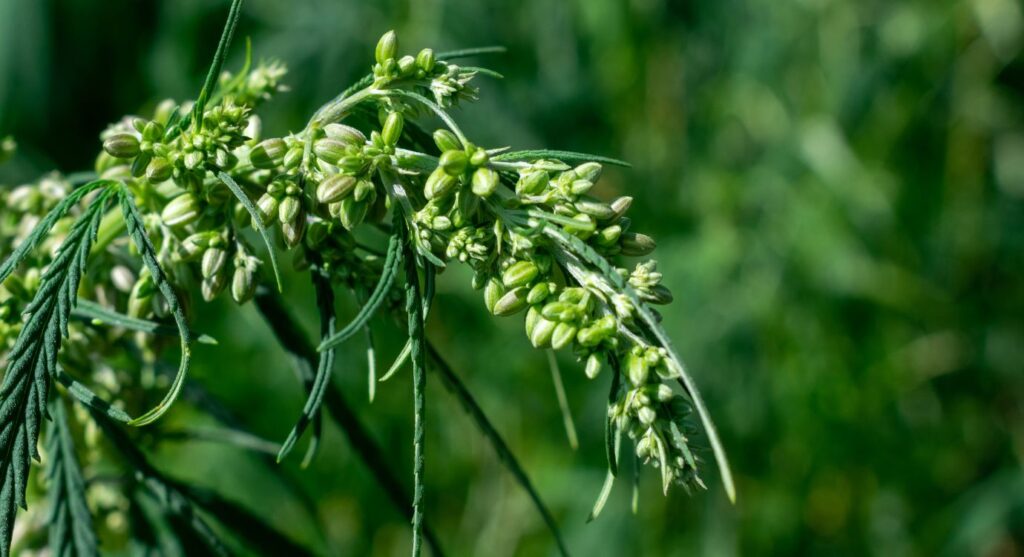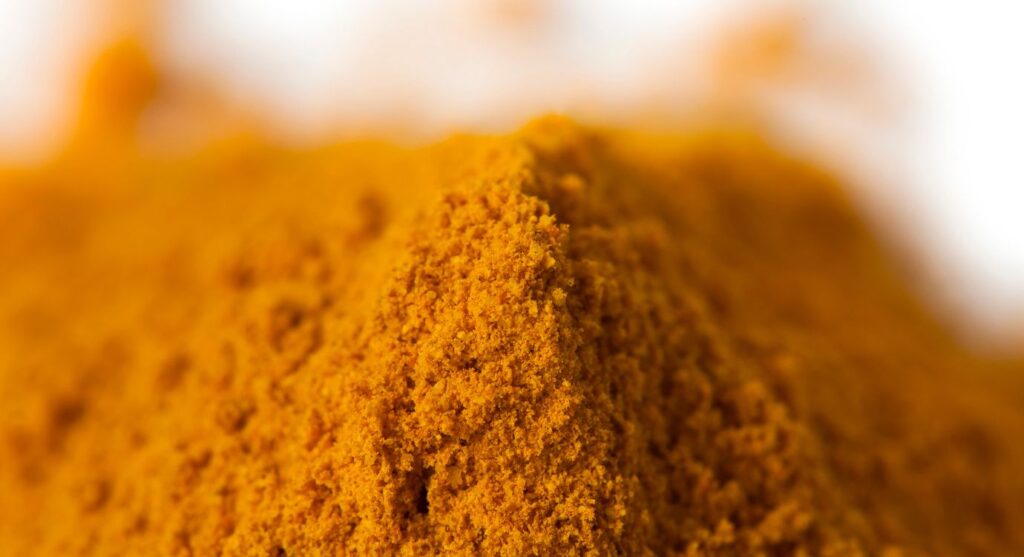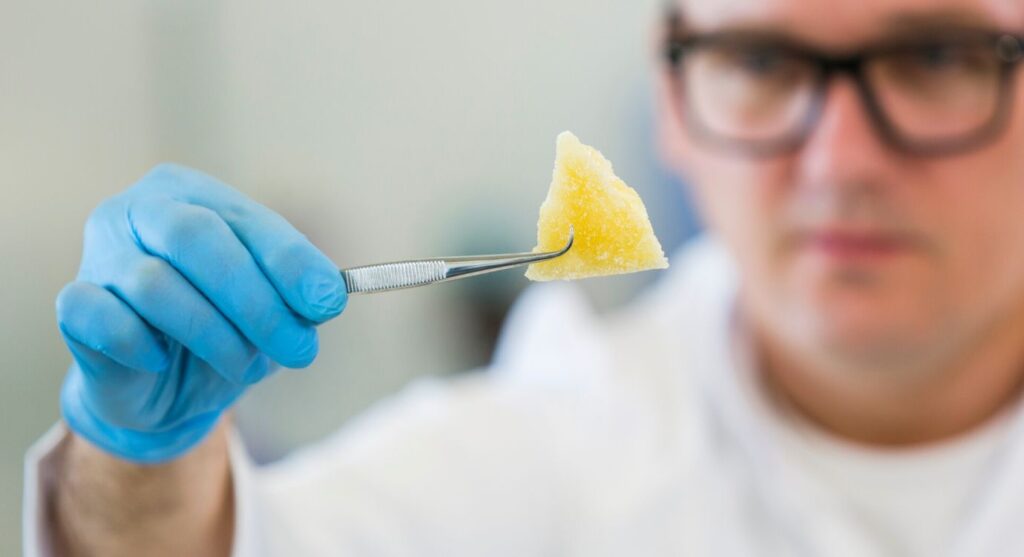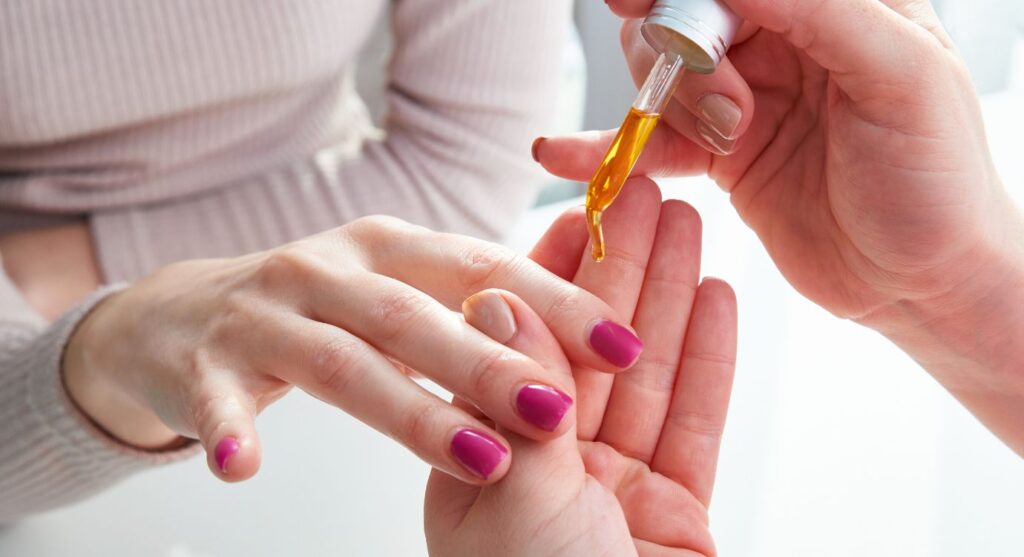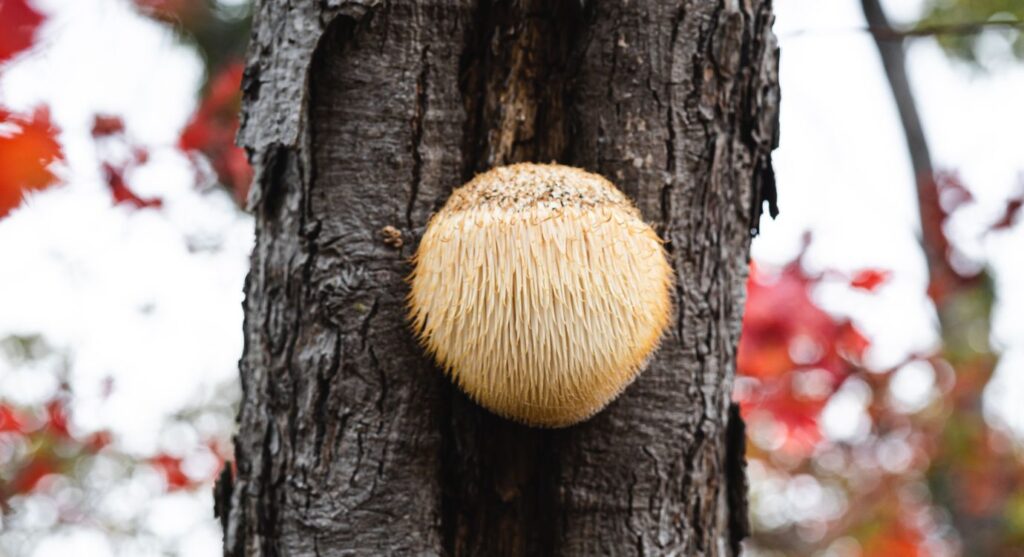If you’re new to the world of CBD, you might be confused by the terminology used. CBD distillate is often used interchangeably with CBD oil and CBD isolate, but they aren’t the same thing.
As part of the CBD industry boom, we’ve seen a wide range of product development, including the introduction of CBD distillate. We’re here to clear up any confusion around what is CBD distillate and how it is different from other CBD products, to help you make an informed decision.
In this guide, we’ll cover:
- What exactly is CBD distillate?
- What is the difference between CBD distillate and isolate?
- How CBD distillate is made.
- How to take CBD distillate.
In this guide:
What is CBD distillate?
Simply put, CBD distillate is a purer alternative to CBD oil. It is a distilled form of CBD oil that has been further refined to obtain a higher CBD content and a smaller range of plant compounds.
CBD distillate is highly concentrated with 80% or more CBD content. The remaining portion of CBD distillate is made up of other plant compounds, including cannabinoids (including THC), terpenes, and flavonoids.
Due to the high cannabidiol concentrate, CBD distillate is considered one of the purest forms of CBD available, second only to CBD isolate.
As CBD distillate contains additional plant-based compounds and cannabinoids, it has the potential to deliver the entourage effect, which many believe is key to maximising the benefits of CBD.
CBD isolate vs distillate: What’s the difference?
People often get CBD isolate and CBD distillate confused. This is not surprising, considering that they are both highly refined and concentrated forms of CBD.
However, there are key differences in the cannabinoid contents of these products, depending on the level of refinement.
In short: CBD isolate is CBD distillate that has been further refined until only pure CBD molecules are left. Hence, CBD isolate is a purer and more refined form of CBD than CBD distillate.
The crystal form of CBD isolate is a fine, white-coloured powder that contains only the cannabidiol compounds. It is the purest form of CBD available, with at least 99.5% cannabidiol content, much higher than the 80% cannabidiol content of CBD distillate.
However, this purity means CBD isolate does not contain any of the many other cannabinoids found in the cannabis plant, including the psychoactive compound THC. The absence of these cannabinoids means that you miss out on the “entourage effect” found in CBD distillate.
Is CBD distillate better than isolate?
One is not better than the other. It simply comes down to personal preference and what works for your individual needs.
CBD isolate is more suitable for people who want to avoid THC altogether or who undergo regular drug testing. CBD distillate contains a wider range of cannabinoids that may result in greater health benefits.
10% off on your first order
Complete this one-minute quiz and find the right products for you.
What is full-spectrum vs broad spectrum CBD distillate?
Now that we know the difference between CBD isolate vs distillate, let’s explore CBD distillate in more depth.
CBD distillate is available in two main subcategories based on the cannabidoil profile:
- Full-spectrum distillate
- Broad-spectrum distillate
Full-spectrum CBD distillate has some THC
Full-spectrum CBD distillate is essentially a CBD distillate that contains all the cannabinoids of the hemp plant. This includes trace amounts of THC.
The amount of THC in a full-spectrum CBD product is negligible and cannot alter your mental state.
CBD is the primary active ingredient in full-spectrum CBD. Of course, this wide range of different cannabinoids means that full-spectrum distillate is more likely to produce the “entourage effect”.
The presence of other plant compounds, including terpenes and flavonoids, is what gives full-spectrum distillate its earthy taste.
Read more: CBD isolate vs broad-spectrum
Broad-spectrum CBD distillate has non detectable THC
Broad-spectrum distillate is similar to the full-spectrum distillate, but it is further refined.
It still contains a range of cannabinoids, but some of the cannabinoids found in full-spectrum distillate have been eliminated or reduced. Specifically, THC is generally removed or reduced to very low levels. This is sometimes labelled as NDT or non-detectable THC.
Broad-spectrum distillate, as a more refined product, may also have fewer impurities compared to some full-spectrum products. It’s also a more subtle taste, as many of the earthy plant compounds are removed.
It can be prepared in two ways:
- Adding compounds to CBD isolate
It can be made by adding the required components to CBD isolate to achieve the desired entourage effect from the various cannabinoids but without any impurities.
This method allows manufacturers to choose the precise cannabinoid profile of the product. However, it is more artificial than a full-spectrum distillate.
- Removing THC from full-spectrum CBD
The second method is to remove the THC from full-spectrum CBD using a distillation process.
However, in this case, other components and impurities may remain in the final product, depending on the quality of the distillation process.
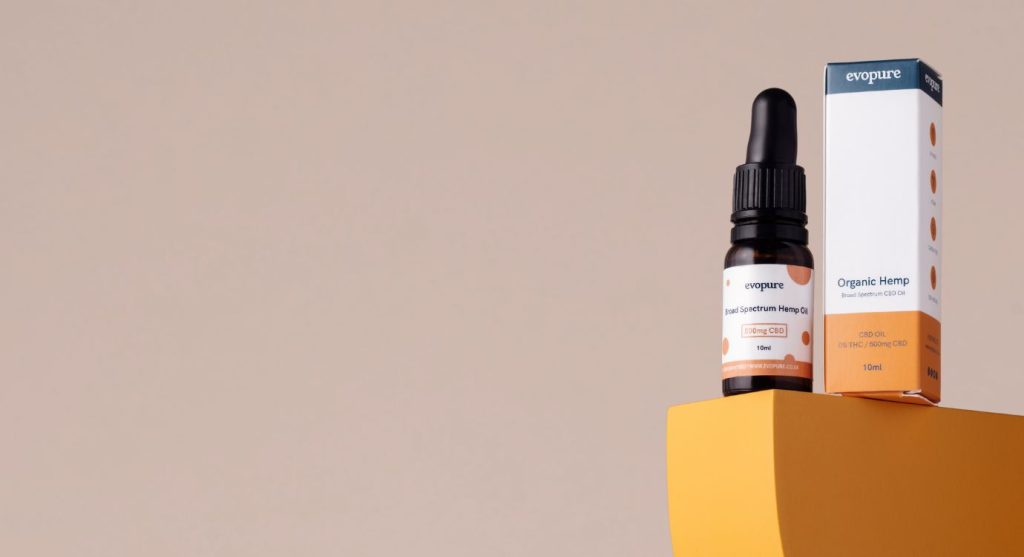

How is CBD distillate made?
As the name itself suggests, CBD distillate production is, at its core, a distillation process.
However, there is more to this process than simply distillation, and a number of other steps are involved, from extracting CBD and other cannabinoids from the raw hemp plant to the final distillate.
Let’s take a look at each step of the process.
1. Extraction
The extraction process is usually carried out with a solvent like carbon dioxide (CO2) or ethyl alcohol (ethanol), to extract various cannabinoids and terpenes without themselves attaching to the resulting substance.
CO2 is used after converting the gas into a ‘supercritical state’ wherein it exhibits characteristics of both liquid and gas simultaneously. Unlike CO2, ethanol can be directly used as it exists in liquid form at room temperature.
2. Winterisation
The extracted product is further mixed with ethanol in a container and kept chilled for two days. This helps to solidify impurities so that they will separate from the required components and settle at the bottom.
3. Decarboxylation
The decarboxylation process activates the cannabinoids in the distillate, ‘waking up’ the CBD and other cannabinoids. The process also gets rid of certain elements that give the distillate a leafy taste.
4. Final distillation
The final step is the ultimate distillation which removes any further impurities from the product by heating the distillate in a vacuum chamber that lowers the boiling point.
The vapour produced is condensed to obtain the final product.
How is CBD distillate made?
Extraction
A solvent like CO2 or ethanol is used to extract cannabinoids and terpenes from the raw hemp plant.
Winterisation
The extraction is further mixed with ethanol chilled to separate impurities from the required components.
Decarboxylation
This activates the cannabinoids in the distillate and removes elements that give the distillate a leafy taste.
Final distillation
The distillate is heated to lower the boiling point & produce vapour that is condensed into the final product.
How to use CBD distillate
CBD distillate, once produced, can be integrated into a number of products in order to take advantage of the benefits of this powerful form of CBD.
CBD oil
One of the most common ways to take CBD distillate is in the form of oil.
CBD oil is easy and convenient to take: it can be consumed as is, or added to foods or beverages, and distillate oils are highly concentrated and therefore powerful.
It is important to understand the difference between CBD oil and CBD distillate. CBD distillate can be an oil, but not all oils are distillates.
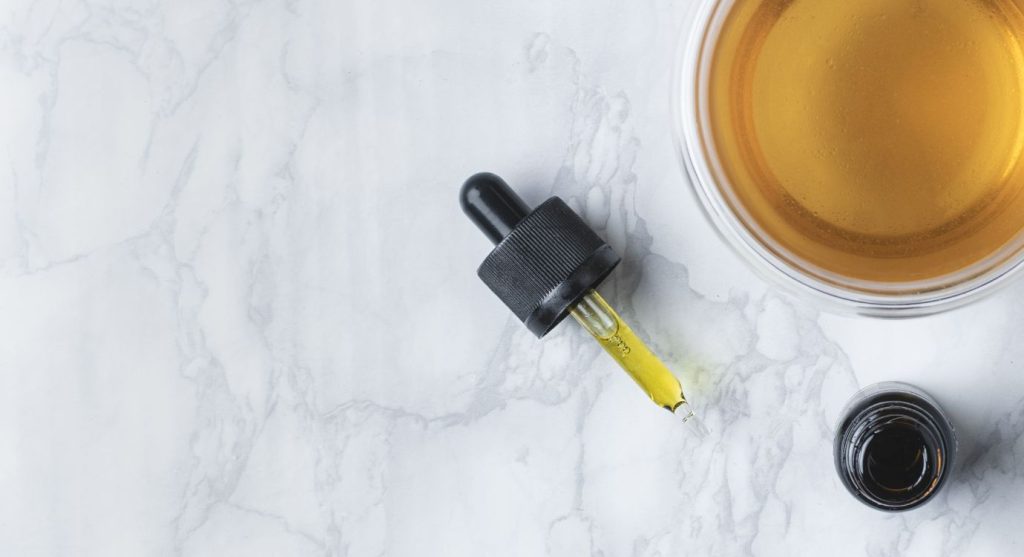

Edibles
CBD can be mixed with your favourite dishes and consumed as normal, delivering the same benefits of CBD as when taken directly. It can be used in cooking, made into CBD smoothies, used in CBD cakes and baked into your favourite CBD brownies!
Read more: Cooking with CBD oil
Topically
CBD distillate can be applied in the form of creams, lotions, or other topicals on to your skin. It will be absorbed by the body when you apply it over your skin.
You can buy CBD balm ready-made, or prepare your own topical at home by mixing the distillate with ingredients such as coconut oil.
Vaping
Vapourising or vaping is another common way to quickly and easily take CBD distillate.
Dedicated devices like vaporisers, vape pens, cartridges and e-cigarettes including those designed to be used with CBD distillate are widely available on the market.
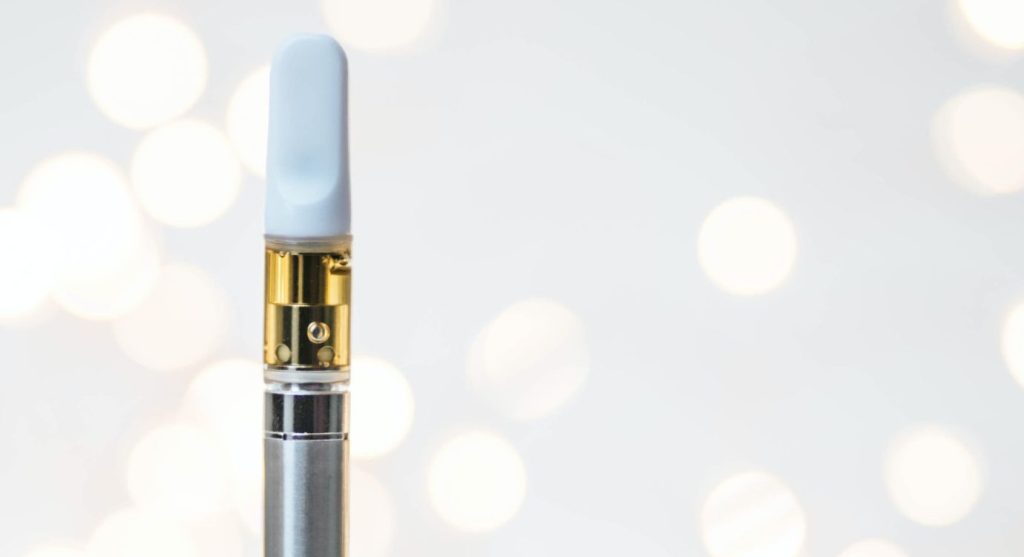

The pros and cons of CBD distillate
Like any process or product, CBD distillate has its own pros and cons.
The process of drawing extracts by distilling the raw material to obtain the final CBD distillate can have certain negative effects on the final product.
However, this is a generally efficient and effective process to achieve a highly concentrated, powerful form of CBD.
With the various types of CBD products available, it is important to consider the advantages and disadvantages of each in order to decide which is the best for you.
So let’s take a look at the pros and cons of CBD distillate.
The pros of CBD distillate include:
- High potency: As CBD distillate is a concentrated substance, it can be used to manufacture highly effective products. This also means that you don’t need very much CBD distillate to have a powerful effect.
- Versatility: CBD distillate is highly versatile and flexible to use, being generally tasteless and odourless. It can be consumed in various methods and can be easily made into a wide variety of products.
- Broad and full-spectrum: CBD distillate contains a range of other cannabinoids to deliver the entourage effect, with broad spectrum options with extremely low levels of THC.
The cons of CBD distillate include:
- Component degradation: The distillation process can degrade or take away the quality of certain components in the CBD. Manufacturers sometimes add extra terpenes to compensate for those lost as a result of the process. These added terpenes may not deliver the exact effect as naturally occurring ones.
- Cost of equipment: The production of CBD distillate requires expensive lab equipment, making the end product more expensive than less pure CBD products.
Read more: Why is CBD oil so expensive?
Final thoughts on CBD distillate
CBD distillate is a concentrated and powerful form of CBD. It is less pure than CBD isolate, though still boasts impressively high CBD concentration of around 80%.
Additionally, the presence of other cannabinoids and compounds supports the arguably beneficial “entourage effect”.
As with any CBD product, it is important to do your research and make sure you only buy quality distillate from a trusted vendor.
Frequently asked questions:
What is CBD distillate good for?
CBD distillate can be used as a relaxation aid and may help control pain and inflammation.
Is CBD isolate of CBD distillate better?
Choosing between CBD isolate vs distillate depends on your specific needs and goals. CBD isolate is better if you want to avoid THC altogether, but CBD distillate is better if you want to benefit from the entourage effect.
Is CBD distillate the same as CBD oil?
The biggest difference between CBD oil and CBD distillate is the CBD content. CBD distillate will typically have around 80% CBD, making more more potent than regular CBD oil.


